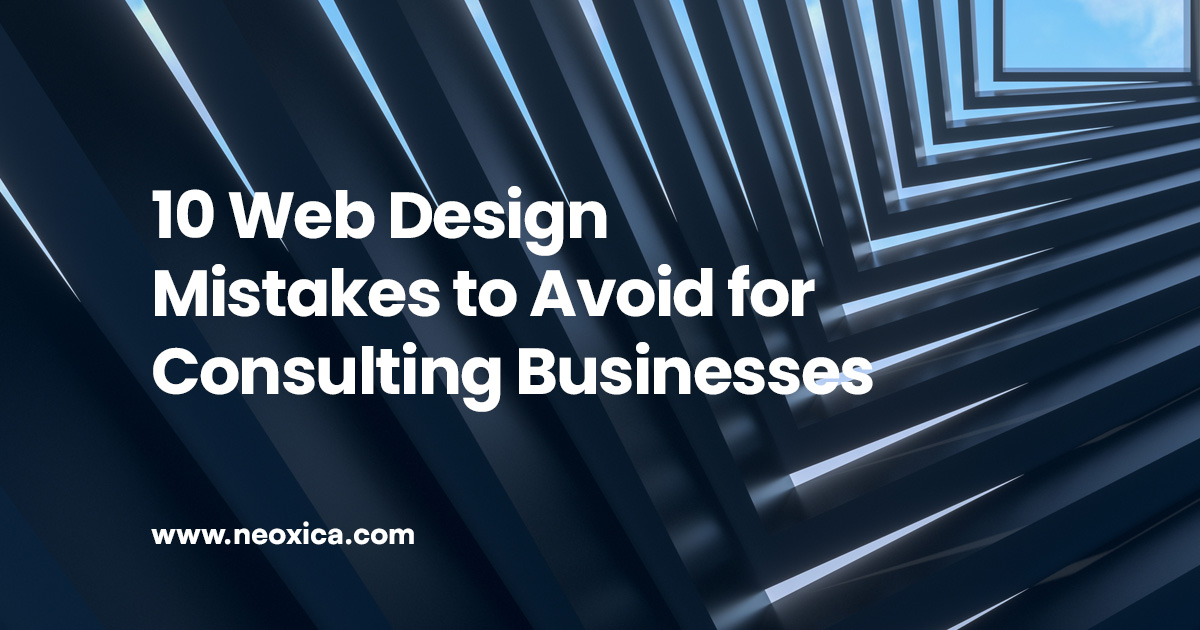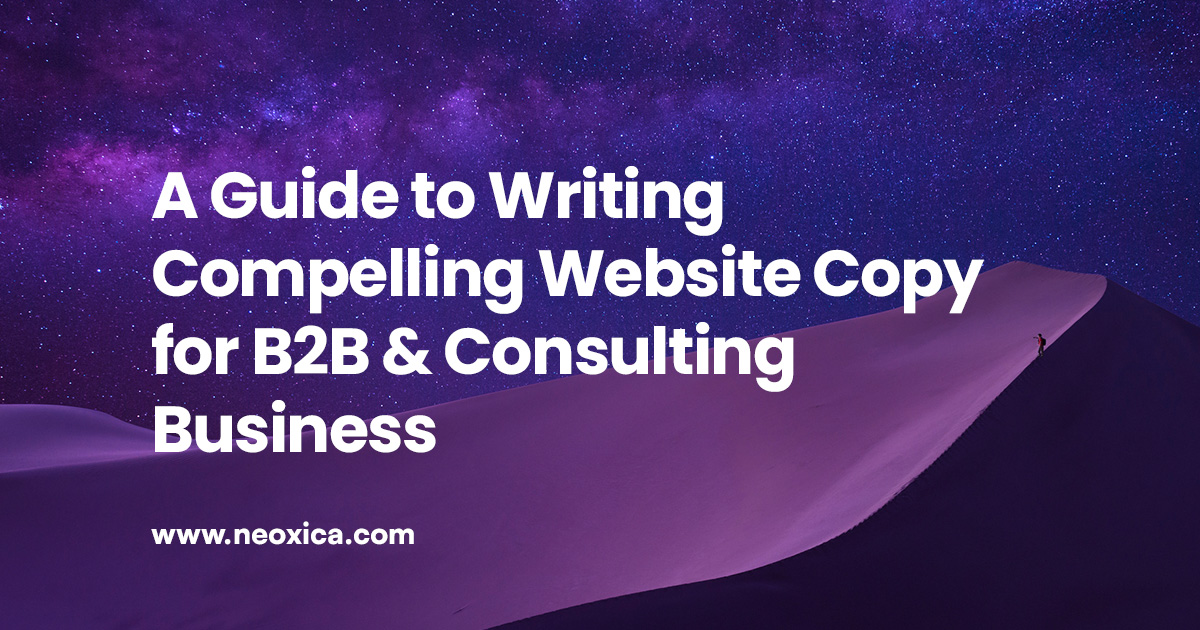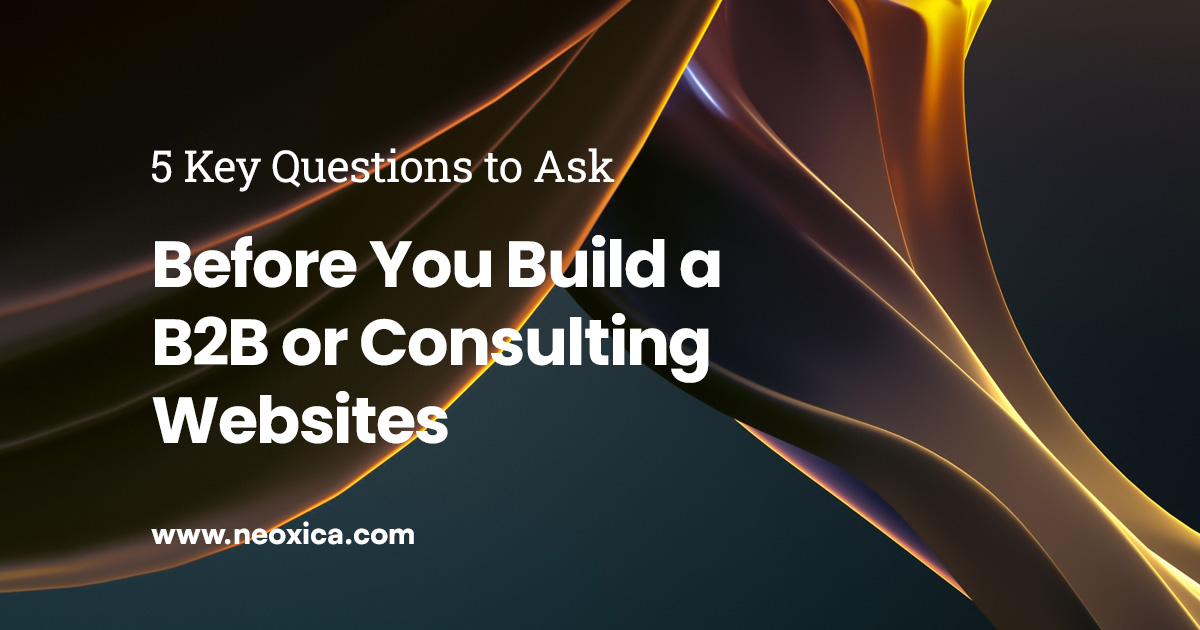In today’s digital age, having a well-designed website is crucial for any business looking to attract and retain customers. However, many businesses make web design mistakes that can lead to a negative user experience and ultimately hurt their ROI.
To ensure your website is optimized for success, it’s important to understand common web design mistakes and avoid them at all costs.
I have created a successful website for my tax consulting business. And in this guide, I’ll share the importance of website design and the common mistakes to avoid to maximize the ROI of your website.
1. Your Website Does Not Explain What You Do
One of the common mistakes during the web design process is failing to explain what your company does on your website. Your website should immediately convey your company’s purpose and the products or services you offer to users. The content on all of your pages should clearly reflect your business to avoid any confusion.
Users tend to form an opinion of a company within seconds of the website loading, and if they cannot determine your business’s purpose, they are likely to leave and search for another website. Including a list of products and services on every page, along with awards and testimonials, can help build trust with visitors and reduce the bounce rate.
2. Unclear Call To Action
When a user shows interest in your consulting services and reaches your website, it’s important to have a clear next step for them to take. Your call to action (CTA) should be prominent and persuasive, motivating users to take action in the buying process. Using strong action phrases like “Book a Consultation,” “Contact Us,” or “Get Started” on buttons can be helpful.
Read also: Building high converting website for B2B or consulting business.
3. No Analytics
When you launch a new or redesigned a consulting firm website, it’s essential to track its performance using an analytics tool. Shockingly, around 75% of consulting businesses do not track their website’s performance using analytics.
By using website analytics tools, you can gain valuable insights into your website’s performance, such as total visits, individual page views, bounce rates, average session duration, traffic sources, and other essential metrics.
Analyzing your website’s data will help you identify areas that need improvement, allowing you to attract more traffic. Google Analytics is the most popular analytics tool used, and there are various plugins available that can track analytics as well.
4. Poor Search Engine Optimization (SEO)
Simply having a good website is not enough to generate leads. To avoid another web design mistakes, your website needs to be optimized to attract relevant search traffic and maximize its ROI.
However, poor SEO can make it challenging for users to find your website. Therefore, it is crucial to work with an SEO professional who can properly optimize your website and ensure it ranks well on search engine result pages (SERPs).
To get started, consider the following tips for improving your website’s SEO:
- Long-tail keywords: While using the right keywords has always been crucial for SEO, it’s now essential to focus on long-tail keywords and phrases instead of short keywords. For instance, instead of trying to rank for “home care,” agencies providing home care should aim to rank for long-tail keywords like “custom home care services” and “what is the cost of home care.” Relevant long-tail keywords can be found by searching for shorter keywords on Google and looking at the related search terms at the bottom of the SERPs.
- Regular content posting: Updating your website with fresh, unique, and valuable content is still critical for SEO performance. Google prioritizes informative content that it believes is valuable to its users. To ensure your website is updated regularly with fresh content, consider including a blog. Regularly posting blog posts not only helps with SEO but also provides your audience with valuable information and builds your brand through trust.
- Social media engagement: Social media engagement is crucial for promoting your website, building your brand, and interacting with your audience. Many businesses use Facebook, Twitter, Instagram, Pinterest, and other social media outlets to share new blogs, inform customers of new sales and promotions, and promote new products and services.
5. Lacks Mobile Friendly Web Design
The majority of searches that take place online come from users on mobile devices. This makes it extremely important for your website to have a mobile friendly web design.
Websites that are responsive to mobile devices will load and display properly on every device, allowing the users to easily navigate throughout the entire site. If your website loads too slow or doesn’t function properly on mobile devices, mobile users will be quick to leave your site.
The other reason to make sure your website is mobile responsive is that Google gives preference to websites that account for mobile users. If your website is not mobile friendly, it will be a lot less likely to rank well in the SERPs.
6. Slow Loading Time
Slow loading time is a common web design mistakes that can harm your website’s performance. A website that takes too long to load can frustrate users and cause them to leave your site before it fully loads. A slow website can also have a negative impact on your search engine ranking, as search engines like Google prioritize fast-loading sites.
To ensure that your website loads quickly, you can take a few steps. First, optimize your images and videos to reduce their size without sacrificing quality. You can also use a content delivery network (CDN) to help speed up your website’s load time. Additionally, consider optimizing your website’s code and scripts to ensure they are streamlined and efficient.
Read also: Ask these 5 questions before building website for your consulting firm.
7. No H1 Or H2 Headings And Subheadings
To enhance the user experience and improve your website’s search engine ranking, it is crucial to incorporate H1 and H2 headings into your website’s content. Headings and subheadings help to break up the text, making it easier for users to scan through the content and find the information they need quickly. By doing so, you can improve user engagement and reduce your bounce rate.
Moreover, search engines such as Google use H1 and H2 headings to understand the topic of your web pages, which in turn can help your pages rank higher in the SERPs for relevant searches. Therefore, it’s important to use descriptive and relevant headings to help search engines better understand your content.
8. Navigation Is Hidden
The user experience of your website greatly depends on the navigation system. It should be clear and easy for visitors to use so that they can access your internal pages without any confusion. If certain parts of your navigation system are hidden or if a page is not linked in the navigation, it may go unnoticed by users and receive little to no traffic.
While it is common to have hidden navigation menus for mobile devices due to limited screen space, it is essential to have a visible and comprehensive navigation menu for desktop users. Ensure that every page of your website is linked within the navigation, regardless of the device, to make it easier for visitors to explore your website.
9. Contact Information Is Hard To Find
Ensuring that your website’s contact information is easily accessible is crucial, particularly if it is a vital part of the purchasing process.
Make certain that a link to your contact page is prominently displayed in the main navigation, and that the page contains all the information necessary to contact your company, including contact forms, phone number, email, address, and other pertinent information.
Additionally, it is recommended that your phone number and contact form be integrated into the top and side navigation menus on each page of your website.
10. Your Website Is Not Secure (HTTPS)
Ensuring that your website is secure with an “https” URL is crucial, particularly if you require your customers to provide personal information or make purchases through your site. Having a secure site helps build trust with your visitors and increases their confidence in making transactions.
Moreover, Google may lower your website’s ranking and label it as insecure if it is not secured. Visitors using Google Chrome may receive a pop-up warning indicating that your website is not secure.
Build a high-performing website for your consulting firm can be easy and affordable
Optimizing your website for SEO and performance is crucial for attracting visitors and generating leads. By following the tips discussed above, you can create a website that is both user-friendly and search engine-friendly, which will maximize your ROI and help grow your business.
As a website design specialist for consulting services, I can provide guidance and support to help you set up a website that is optimized for SEO and high performance. Whether you need help with keyword research, content creation, or website design, I’m here to help you succeed online.
Let’s work together to create a website that will attract more visitors, generate more leads, and grow your business.




